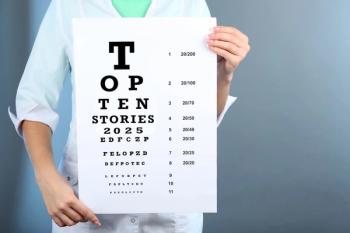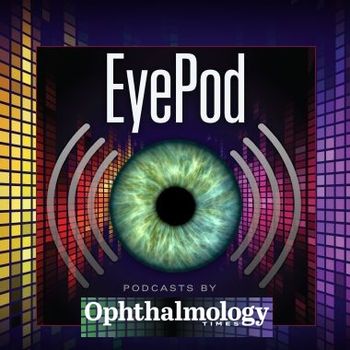
Macular degeneration is occurring earlier -and the culprit may surprise you
In an increasingly technologic world, blue light-omitted by devices like cell phones and computers-is inescapable. It’s important to know how it contributes to AMD, and how your patients can take steps to protect their eyesight with three easy tips from Alan Mendelsohn, MD.
Editor’s Note: Welcome to “
"Don't sit so close!"
Our parents and grandparents used to warn, “Don’t sit so close to the TV. It will hurt your eyes.” Back then, the admonition had an intuitive rather than scientific basis. Now we know that they were right, even if we weren’t sure why.
Over the past decade, complaints to physicians about headaches and eye strain have increased in frequency. While patients may suspect the culprit is extended- and long-term exposure to computers, cell phones, iPads, and other digital devices, the complaints disguise the more pernicious implications of exposure to high-energy visible (HEV) light.
According to the
The most obvious solution - “Spend less time on online or staring at your cell phone” - simply isn’t viable. Most people’s jobs require excessive amounts of time in front of a computer screen, while our recreational hours are increasingly spent either online or focused on a cell phone or other electronic device screens.
As an ophthalmologist in practice for 30 years, I see the danger and damage firsthand and would love nothing more than to limit each individual’s time online.
However, the more prudent approach is to recognize the real danger posed by excessive exposure to the unique wavelengths of light that are omnipresent in modern society, and urge preventative, protective, and practical solutions.
What is blue light?
They also cause drusen -a precursor to macular degeneration. This condition has typically been age-related and is the number one cause of blindness in the United States in people age 50 and older. However, the increased exposure to digital devices is alarming, as it suggests that we may begin seeing symptoms of macular degenerations beginning at earlier ages.
These risks of exposure to blue light are not new. They are not only caused by the prevalence and convenience of digital devices but have always existed due to exposure to sunlight, especially in the Southern parts of the United States. Warnings over the years about the risks of skin-cancer-causing UV rays have led people to use sunblock protection and spend less time outdoors. But more time spent indoors often means more time spent online or staring at our digital screens and exposed to blue light.
Prevention: Keep devices further away from your eyes
As with protection against cancer-causing UV rays, there are ways to defend against the damage caused by blue light.
The first solution is preventative: Keep digital devices farther away from the eye. The “
Holding one’s cell phone two feet away from the face reduces blue-light exposure to one-over-two squared, or one-fourth of the original intensity. This doesn’t seem realistic given the small size of the screen and fonts. However, most people hold their devices too close to their face, typically right under their noses. Moving the device or sitting farther away from the device would reduce both eye strain and exposure to blue light.
Protection: Wear sunglasses with UV blockers
Of course, this becomes more difficult as devices decrease in size for portability so patients must also take protective steps by wearing sunglasses that have an UV light blocker. These blockers can block 100% of HEV light waves. While their use will protect the eye from ultraviolet rays from the sun, they aren’t realistic for use in the office or classroom or even in the home.
Practice: Blue-light blockers are your friend
For that reason, there is also a practical solution: All eyeglasses, even reading or computer glasses used specifically when staring at computer screens, should have a
It turns out that grandma was right: UV rays are harmful, and now blue light has been added to the club.
Dr. Mendelsohn
Dr. Mendelsohn is an ophthalmologist in the South Florida region. It is his mission to increase awareness of serious eye issues. He writes more at
Newsletter
Don’t miss out—get Ophthalmology Times updates on the latest clinical advancements and expert interviews, straight to your inbox.













































